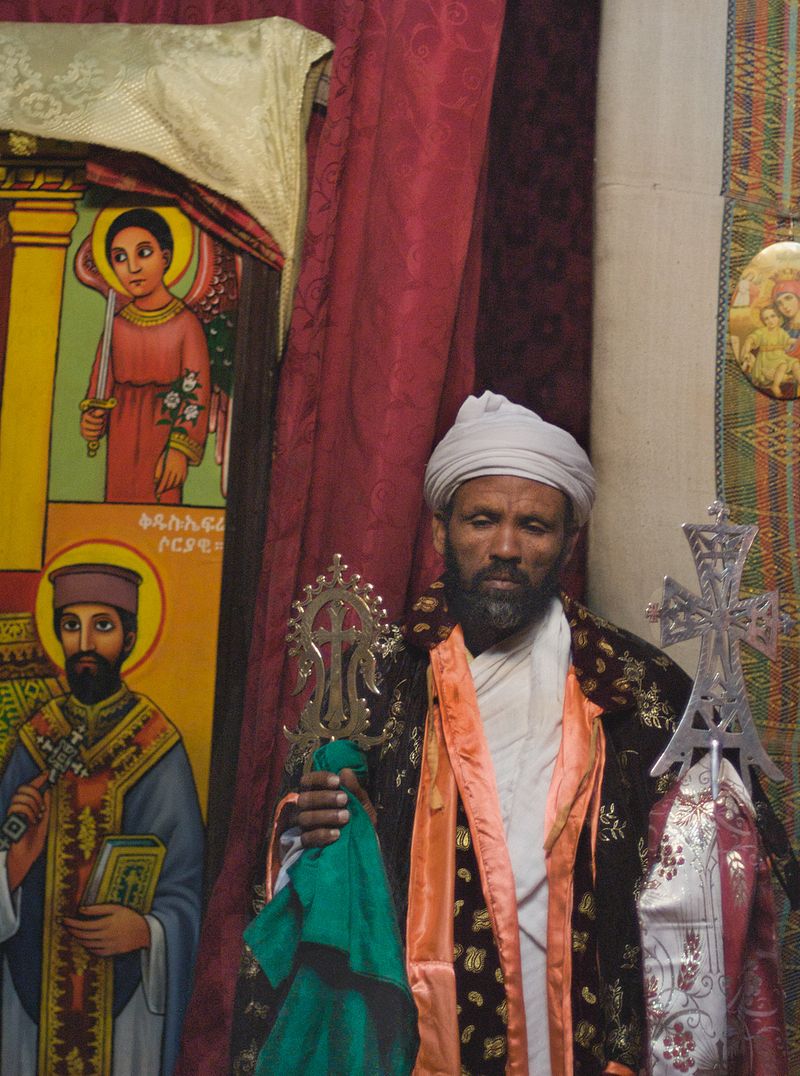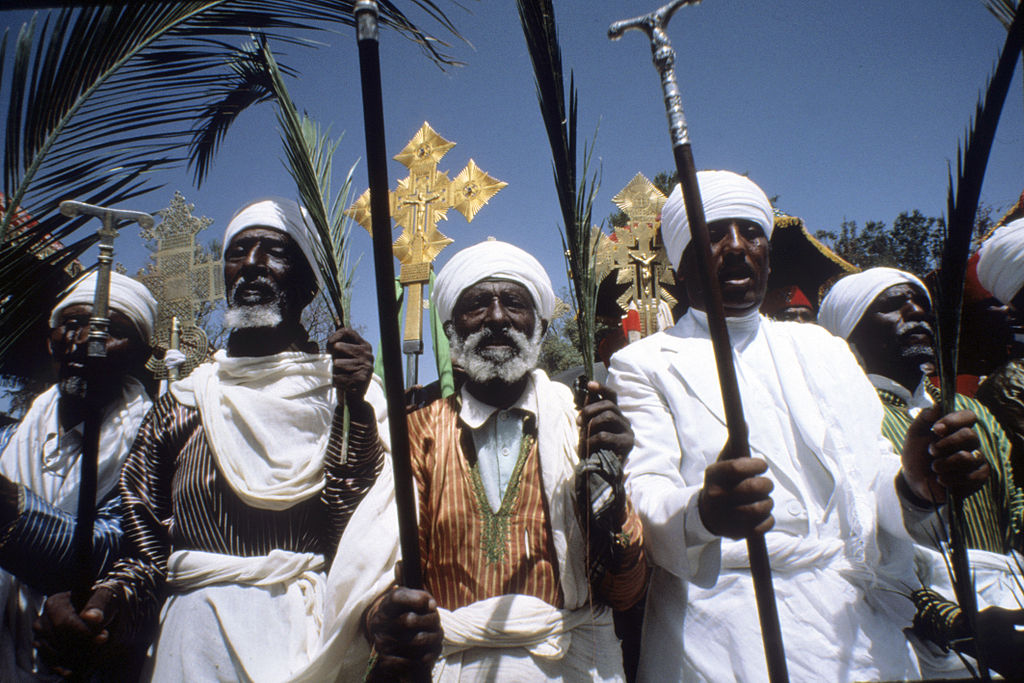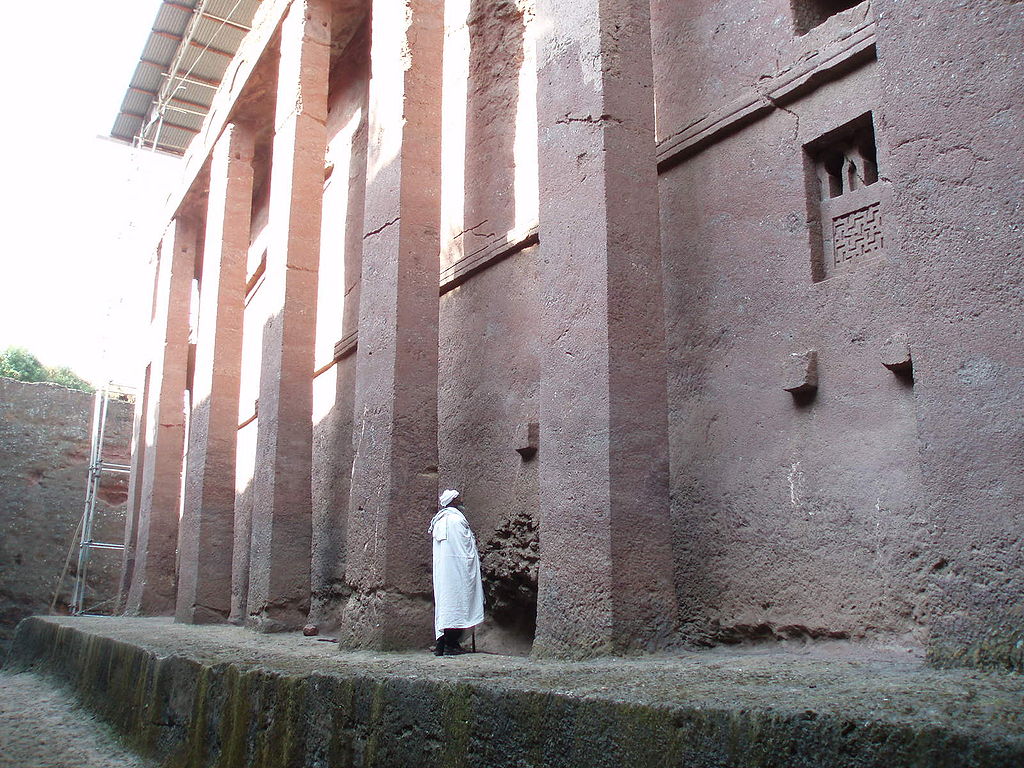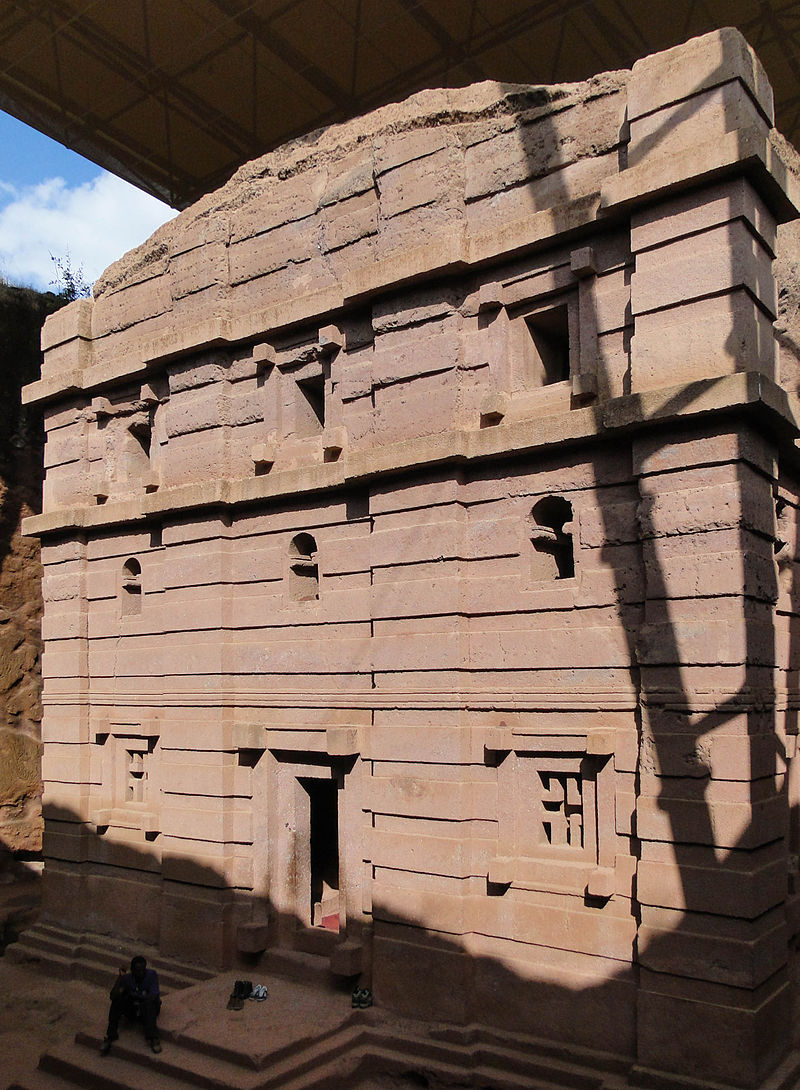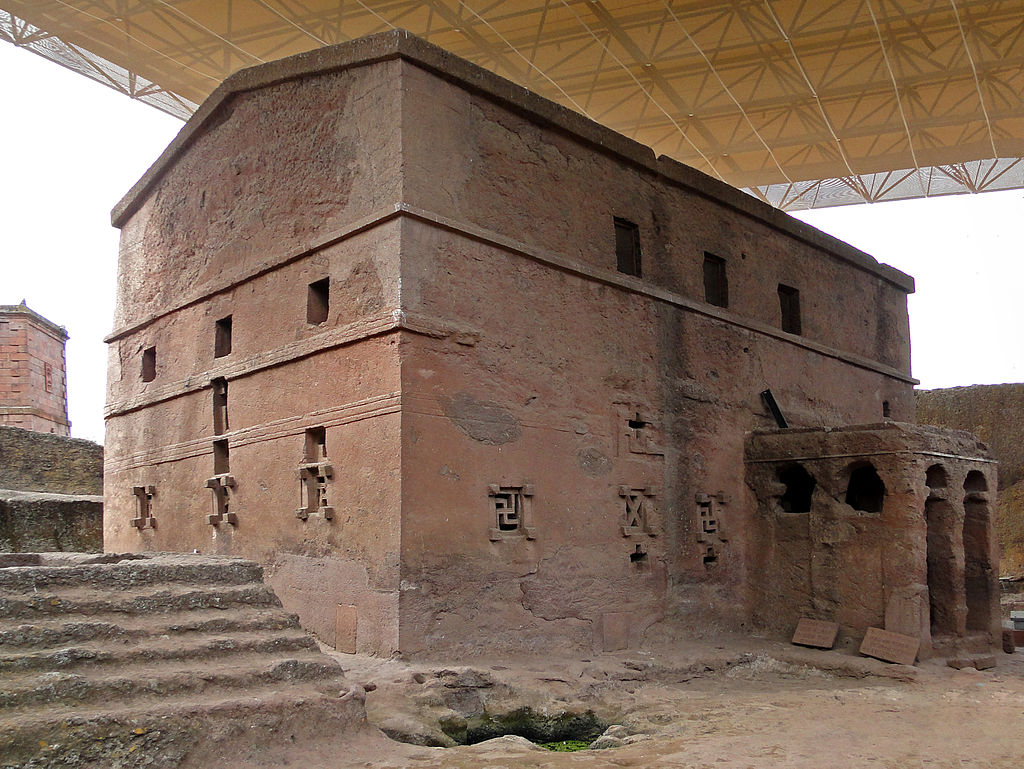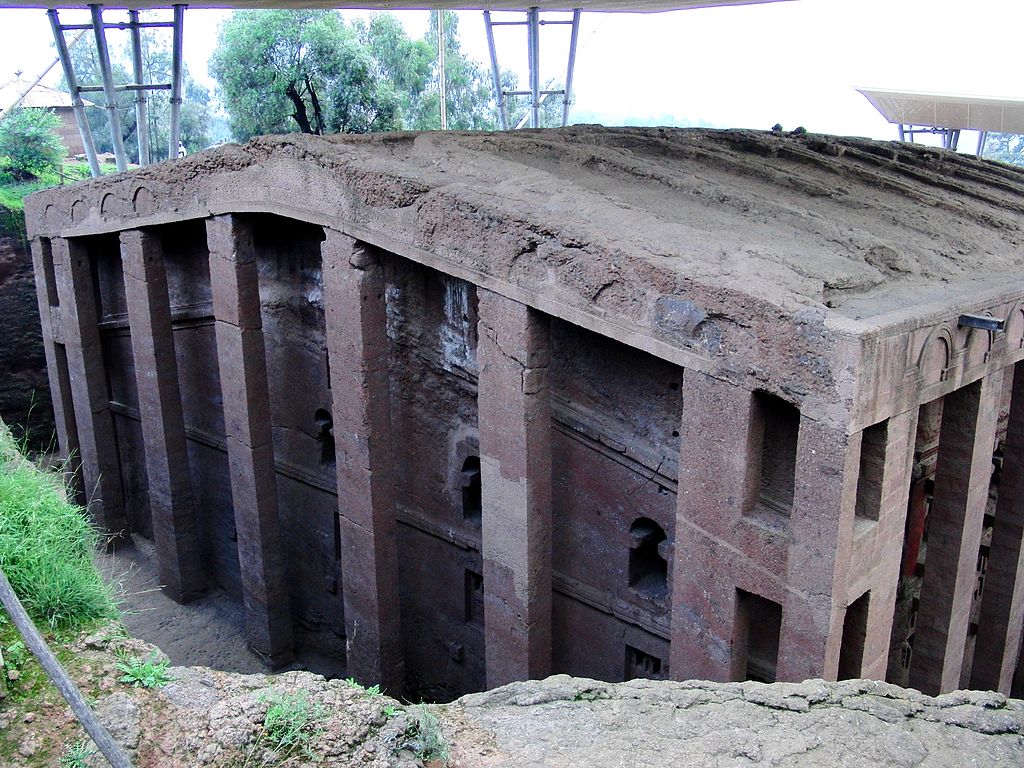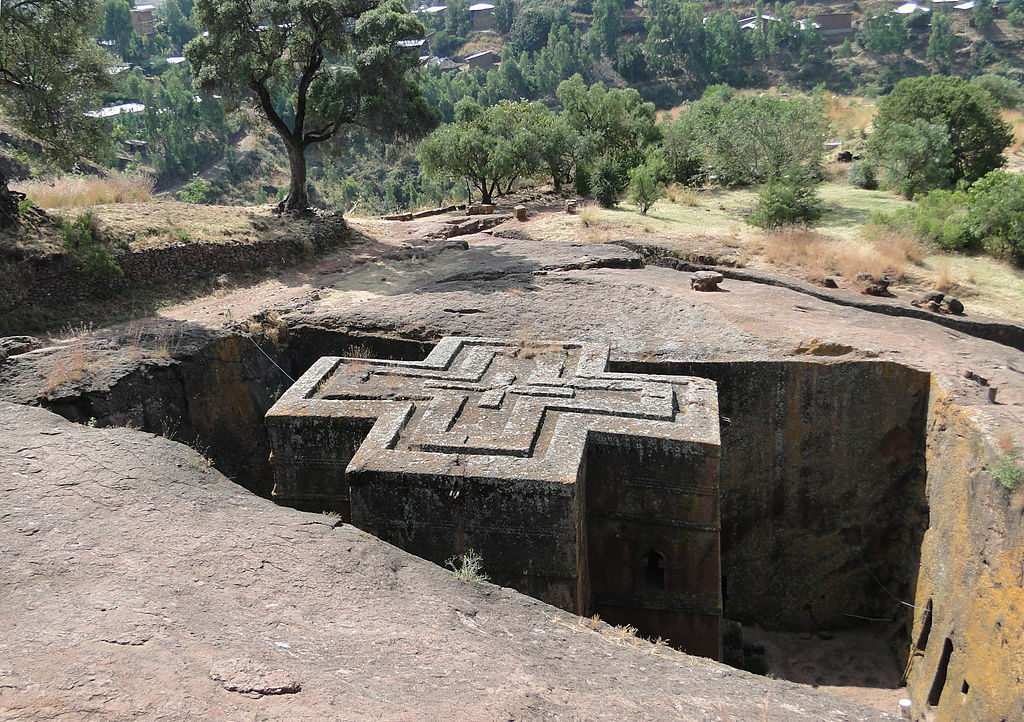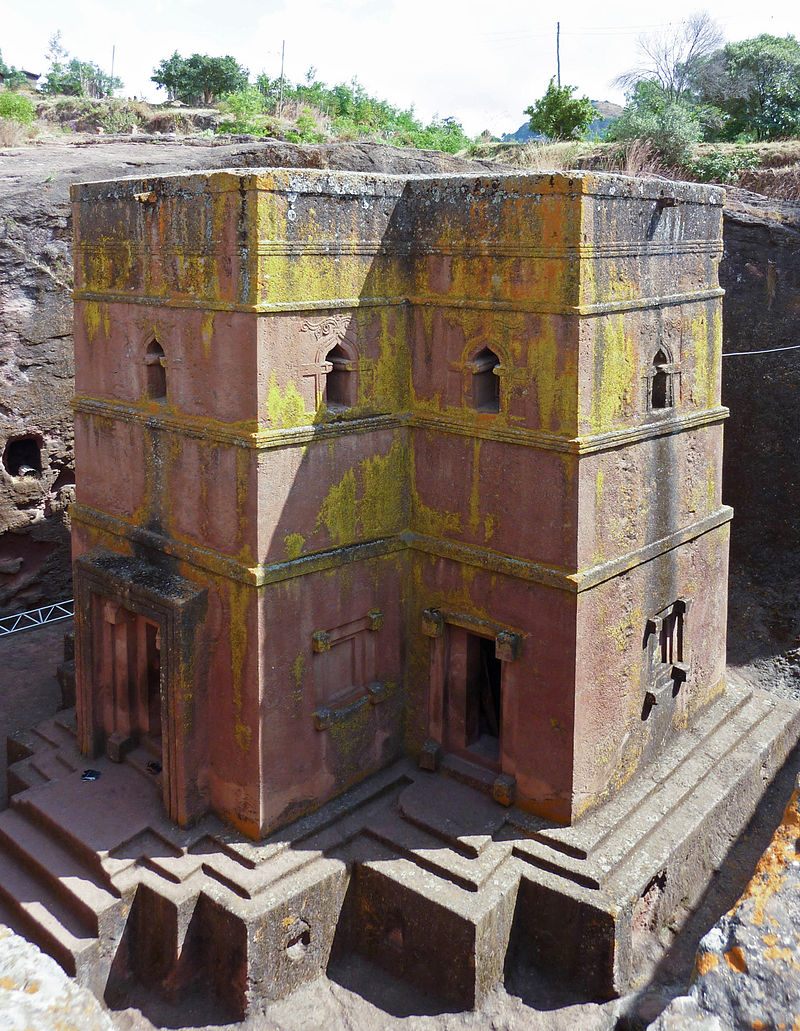Lalibela
Lalibela (Amharic: ላሊበላ) is a town in Amhara Region, Ethiopia famous for its rock-cut monolithic churches. The whole of Lalibela is a large antiquity of the medieval and post-medieval civilization of Ethiopia. Lalibela is one of Ethiopia's holiest cities, second only to Axum, and a center of pilgrimage. Unlike Axum, the population of Lalibela is almost completely Ethiopian Orthodox Christian.
Ethiopia was one of the earliest nations to adopt Christianity in the first half of the fourth century, and its historical roots date to the time of the Apostles. The churches themselves date from the seventh to thirteenth centuries, and are traditionally dated to the reign of the Zagwe king Gebre Mesqel Lalibela (r. ca. 1181–1221).
The layout and names of the major buildings in Lalibela are widely accepted, especially by local clergy, to be a symbolic representation of Jerusalem. This has led some experts to date the current church forms to the years following the capture of Jerusalem in 1187 by the Muslim leader Saladin.
During the reign of Gebre Mesqel Lalibela, a member of the Zagwe dynasty who ruled Ethiopia in the late 12th century and early 13th century, the current town of Lalibela was known as Roha. The saint-king was named because a swarm of bees is said to have surrounded him at his birth, which his mother took as a sign of his future reign as emperor of Ethiopia. The names of several places in the modern town and the general layout of the rock-cut churches themselves are said to mimic names and patterns observed by Lalibela during the time he spent as a youth in Jerusalem and the Holy Land.
Lalibela, revered as a saint, is said to have seen Jerusalem, and then attempted to build a new Jerusalem as his capital in response to the capture of old Jerusalem by Muslims in 1187. Each church was carved from a single piece of rock to symbolize spirituality and humility. Christian faith inspires many features with Biblical names – even Lalibela's river is known as the River Jordan. Lalibela remained the capital of Ethiopia from the late 12th into the 13th century.
The Rock-Hewn Churches were declared a World Heritage site in 1978.
Unesco identifies 11 churches, assembled in four groups:
The Northern Group:
- Biete Medhane Alem (House of the Saviour of the World),home to the Lalibela Cross.
- Biete Maryam (House of Miriam/House of Mary), possibly the oldest of the churches, and a replica of the Tombs of Adam and Christ.
- Biete Golgotha Mikael (House of Golgotha Mikael), known for its arts and said to contain the tomb of King Lalibela)
- Biete Meskel (House of the Cross)
- Biete Denagel (House of Virgins)
The Western Group:
- Church of Saint George, thought to be the most finely executed and best preserved church
The Eastern Group:
- Biete Amanuel (House of Immanuel), possibly the former royal chapel
- Biete Qeddus Mercoreus (House of Saint Mercurius/House of Mark the Evangelist), which may be a former prison
- Biete Abba Libanos (House of Abbot Libanos)
- Biete Gabriel-Rufael (House of the angels Gabriel, and Raphael) possibly a former royal palace, linked to a holy bakery.
- Biete Lehem ("Bethlehem", Hebrew: בֵּית לֶחֶם "House of Bread").
Farther afield, lie the monastery of Ashetan Maryam and Yemrehana Krestos Church (possibly eleventh century, built in the Aksumite fashion, but within a cave).
The churches are also a significant engineering feat, given that they are all associated with water (which fills the wells next to many of the churches), exploiting an artesian geological system that brings the water up to the top of the mountain ridge on which the city rests.
Read more: https://en.wikipedia.org/wiki/Lalibela
Gebre Mesqel Lalibela
Lalibela (Ge'ez: ላሊበላ), regnal name Gebre Meskel (Ge'ez: ገብረ መስቀል, lit. 'Servant of the Cross'; 1162 – 1221) was Emperor of Ethiopia of the Zagwe dynasty, reigning from 1181 to 1221. Perhaps the most well-known of the Zagwe monarchs, the namesake monolithic churches of Lalibela are attributed to his reign, although recent scholarship has suggested origins as early as the late Aksumite period, with the complex reaching its present form during his time. He is venerated as a saint by the Orthodox Tewahedo churches.
This page uses materials from Wikipedia available in the references. It is released under the Creative Commons Attribution-Share-Alike License 3.0.
References